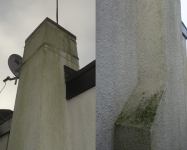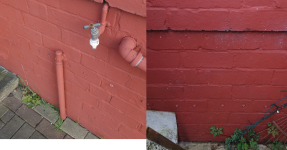Soldato
Hi all,
I'm looking at a house for sale which is an approximately 1930's bungalow. It is mostly externally rendered, and so I cannot tell how it is constructed. I have asked the vendor via the agent and they don't know either.
The house also has a flat roofed rear extension (possibly 1980's built) that is also rendered on the outside. This was built before the current vendors bought the house and so they don't know how this was constructed either.
How can I find out more details about the construction of the house? Is it all down to the survey...if I paid for a full structural survey how much would this tell me about the house? Would it tell me anything about the footings? Is there any information about how bungalows of this era would have been likely to have been built?
Thanks
I'm looking at a house for sale which is an approximately 1930's bungalow. It is mostly externally rendered, and so I cannot tell how it is constructed. I have asked the vendor via the agent and they don't know either.
The house also has a flat roofed rear extension (possibly 1980's built) that is also rendered on the outside. This was built before the current vendors bought the house and so they don't know how this was constructed either.
How can I find out more details about the construction of the house? Is it all down to the survey...if I paid for a full structural survey how much would this tell me about the house? Would it tell me anything about the footings? Is there any information about how bungalows of this era would have been likely to have been built?
Thanks







